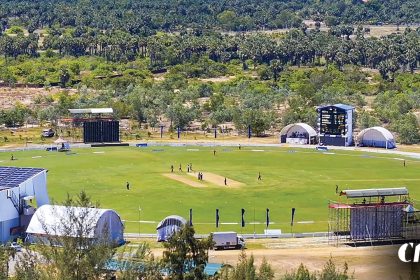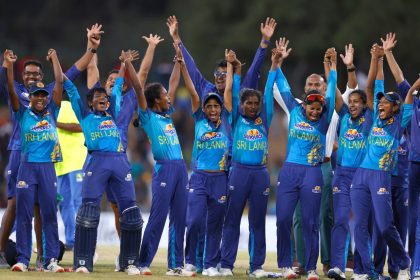The Board of Control for Cricket in India (BCCI) are under fire after claims emerged they have switched out the pitch for their side’s semifinal (World Cup 2023) against New Zealand – without the International Cricket Council’s (ICC) permission according to New Zealand Herald.
ICC event pitches come under the supervision of the governing body’s consultant, Essex-born Andy Atkinson, who is credited as having a “greater knowledge of cricket pitches around the world than anybody else on the planet.”
Atkinson comes to an agreement with the home cricket board as to which of the numbered pitches on the square are to be used in each game.
In a shocking revelation, Australian media are reporting that the agreement has been ignored on the eve of the tournament’s climax. The pitch scheduled to be used in the first semifinal in Mumbai has already been used twice, with the narrative it could assist India’s strong spin bowling lineup as they seek a fourth World Cup final appearance at their home tournament.
Wankehde Stadium plays host to the first semifinal and the pitch that was agreed to be used No 7 – a fresh and unused wicket so far this World Cup.
However, a WhatsApp message has been circulated to a group of more than 50 BBCI and ICC officials that confirms the first semifinal will be played on pitch No 6 – a pitch that has already staged two matches this tournament.
Concerns have arisen that the pitch to be used for the final in Ahmedabad may also be changed.
Aktinson is understood to have flown to Ahmedabad last week, prompted by frustration over a lack of answers around preparation for the final.
The first semi-final of the 2023 ODI World Cup, between India and New Zealand in Mumbai on Wednesday afternoon, will be played on a used pitch that has already staged two matches in the tournament.
The semi-final was initially supposed to be played on Pitch 7, the central strip of the Wankhede Stadium’s pitch block. Pitch 7 is a fresh surface that was not used in the league stage of the World Cup.
But a decision was made to shift the game to Pitch 6, which is slightly off-centre and has already hosted two matches in the tournament: South Africa’s 229-run win over England on October 21, and India’s 302-run victory over Sri Lanka on November 2.
The change represents a late deviation from the pitch allocation devised before the World Cup. A source told ESPNcricinfo: “6-8-6-8-7 was the planned rotation at Wankhede. 6-8-6-8 is what has been used so far.”
According to the ICC’s Playing Conditions for the World Cup, the relevant ‘ground authority’ is “responsible for the selection and preparation of the pitch” before any given match – in this case, the Mumbai Cricket Association (MCA). The ICC also have an independent pitch consultant, Andy Atkinson, who works alongside local groundstaff.
There is no ICC requirement which states that knockout fixtures must be played on fresh pitches. The only stipulation in their Pitch and Outfield Monitoring Process reads: “It is expected that venues that are allocated the responsibility of hosting a match will present the best possible pitch and outfield conditions for that match.”
The semi-finals of the 2019 ODI World Cup, in England four years ago, were both played on fresh pitches at Old Trafford and Edgbaston. But last year, both T20 World Cup semi-finals were played on used pitches: one at Adelaide Oval, the other at the Sydney Cricket Ground.
Both India and New Zealand players inspected the pitch at the Wankhede from close quarters on Tuesday evening before it was covered by groundstaff early during India’s training session under floodlights.













